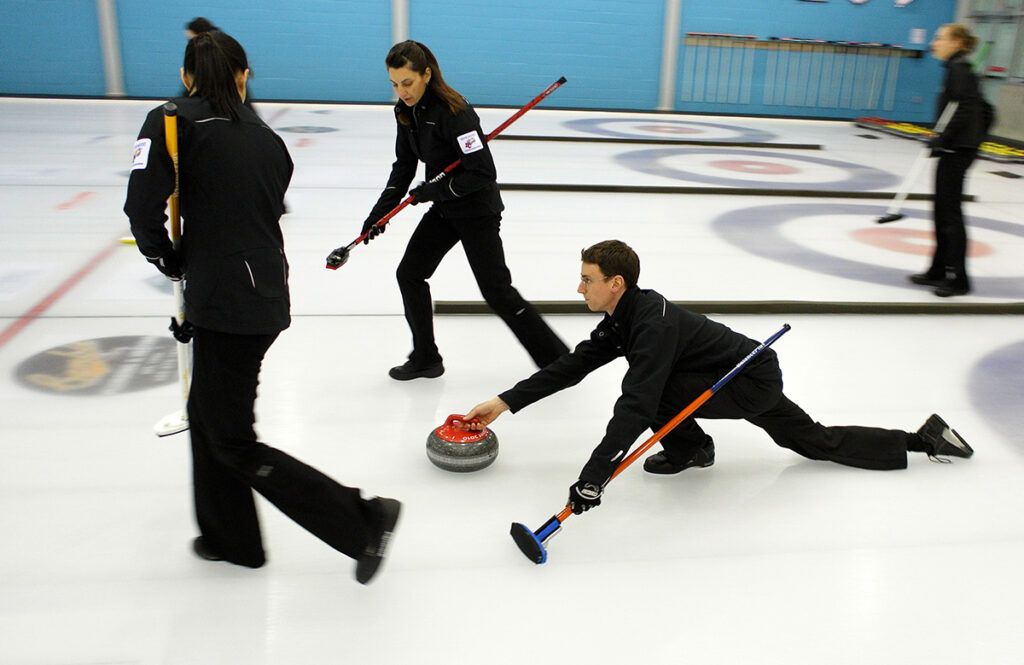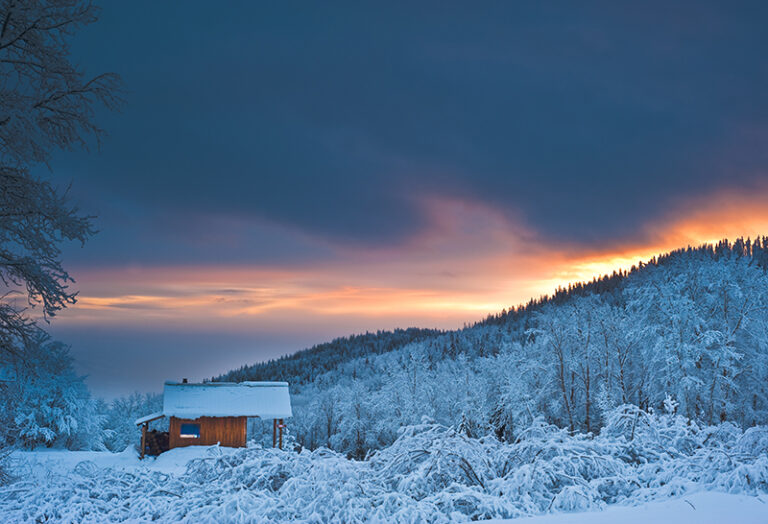The art of curling, why it’s so cool, and how you can give it a try here in the Inland Northwest
By Carol Corbin
How do you keep Canadian bacon from curling in the pan? Take away its tiny brooms. To be honest, when I first heard about curling, I thought it was a joke. Throwing a stone across the ice while people sweep the ice to make it go where they want? It sounded like hobbyhorse riding. Or pickleball.
Okay, now that I have your attention (I know pickleball is a real sport!), let’s talk about this seemingly simple winter activity. Born in Scotland and loved almost as much as hockey by our friends north of the border, curling provides an opportunity for athleticism, strategy, team building and community at a time of year when those things can be difficult to come by.
Curling is a game played on ice in which players work to slide a large, flat stone across the surface toward a specific mark, or “house,” marked by concentric circles on the ice. One player slides or “throws” the stone and the other players use brooms (modern brooms that look more like sponge-mops) to “sweep” the ice. This sweeping action controls the speed and direction of the stone, helping to guide it to its mark. Points are awarded for the team whose stone or “rock” is closest to the “button,” or the center circle of the house. The name “curling” comes from the movement of the stone on the ice.
Curling was introduced to the Olympics in 1924 as a “demonstration event,” but much later (in 1998) the event was added as an Olympic event. In 2002, Curling was granted medal status, with the gold medal going to Great Britain for women’s and Norway for men’s. Canadian teams—men’s, women’s, and mixed doubles—routinely dominate the sport, and curling is televised, as far as I can tell from my frequent visits to the province of British Columbia, 24 hours a day, 7 days a week, on at least one TV in every pub, diner, brewery and living room in Canada.

Earliest evidence of curling occurred in Scotland with a stone engraved with 1511. Since then, a list of jargon including things like “pebbling the sheet,” the “house, tag line, and button,” and “hacks,” are just a few curling terms of many mystifying references in this sport. As an Inland Northwester, here’s what you need to know about “the roaring game.” (Interestingly, this term refers to the sound of the brooms on the ice, and not the roar of the crowds cheering on their favorite “skip,” aka team captain.)
While Scotland will always and forever be its birthplace, Canadians have a ratio of one curling rink to every three citizens. Approximately. However, here in the Inland Northwest, despite the active and dedicated Inland Northwest Curling Club, curlers are forced to wait out hockey players for use of their rink, and, while ice is ice, hockey rinks are not the same. With more interest in curling, more players, and more money, this community could have its very own sheets and host everything from weeknight league play to annual “bonspiels,” a gathering of curlers and their families for tournaments, food, libations and community.
Matt Moore, former president of the INW Curling Club, says he first got interested in curling when he lived in Minnesota. He and his wife began curling for fun but got hooked and immediately joined a league when they moved to Spokane. And as of the winter of 2023, starting each September on Thursday nights, they could be found at Frontier Ice Arena in Coeur d’Alene, brooms in hand (Google “broomgate” for some exciting controversy from the world of curling), throwing, sweeping and listening to calls of the skip to carefully guide the stone to the button.
Coming to understand the finesse and strategy involved in curling, and the inherent community that comes with bonspiels in the dark of winter, it’s easy to see how this sport takes hold in northern climates such as ours. So, if you’re looking for ways to stay active, connected and warm inside and out this winter, maybe you can give curling a try by joining the local league. Or take up hobbyhorses. Up to you.
Carol Corbin is trying really hard to understand this unique winter sport under the tutelage of a patient Canadian boyfriend whose participation in not one but two leagues in British Columbia means she gets to watch a lot of curling.
Sponsored













